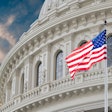
Gender bias needs to be uprooted to open top roles to women at U.S. and international medical journals, according to a study published September 8 in JAMA Network Open.
British investigators reviewed the number of women in editor-in-chief positions at medical journals that have the highest impact in their specialty fields. They found women hold just one in five positions -- a gender gap that hasn't narrowed in 10 years.
"A serious commitment to stem the deep-rooted issue of gender bias is required from all stakeholders," wrote Ana-Catarina Pinho-Gomes, PhD, and colleagues of Imperial College London's George Institute for Global Health.
Despite the gradual increase in the representation of women as physicians in many medical specialties over the past 50 years, women remain underrepresented as authors and in editorial positions at medical journals, according to the authors.
In this cross-sectional study, the researchers investigated the gender distribution of editors in chief of high-impact medical journals indexed on Clarivate's Web of Science global citation database. They identified 41 journal categories related to medical specialties, with a total of 410 journals and 444 editors in chief. The top 10 journals ranked by their impact factor in each category were included.
The proportion of women as editors in chief was 21% (94 of 444), with a wide variation across categories. In 27 of the 41 categories, women represented less than a third of the editors in chief.
Genetics and heredity (82%), primary health care (70%), and microbiology (67%) were the top three specialties with women in editor-in-chief positions. There were five categories in which none of the editors in chief were women: dentistry, oral surgery, and medicine; allergy; psychiatry; anesthesiology; and ophthalmology.
Radiology, nuclear medicine, and medical imaging was ranked among seven other specialties, including infectious disease, orthopedics, and emergency medicine, with just 10% women in editor-in-chief roles.
"The underrepresentation of women as editors in chief is broadly comparable to previous studies, thus indicating that little progress has been made," the authors wrote.
A smaller study published 10 years ago found that only 10 of 63 editors in chief (16%) of medical journals were women, with not a single woman as editor in chief in the category of radiology, nuclear medicine, and medical imaging.
The forecast isn't entirely bleak in radiology, according to Dr. Christine Menias, professor of radiology at the Mayo Clinic College of Medicine and Science in Arizona. She is the first female editor of RadioGraphics, a journal established in 1981.
RadioGraphics is published by the RSNA, which was the first organization in the field to require unconscious bias training for editorial board members and to issue requirements for the selection of women to leadership positions, Menias said.
The society encourages "conscious selection" of female faculty, leaders and representatives, she told AuntMinnie.com.
"One-third of editors in chief of RSNA's portfolio of research and education publications are women," Menias said.
Such steps make gender equality achievable, according to the study authors. They noted the example of primary care in which 70% of editors are women while accounting for 41% of U.S. general practitioners.
The authors also noted the publisher Elsevier's example with the appointment of its first woman chief executive in its 140-year history, as well as its demonstrated commitment to gender equality with the publication of the report, "The Researcher Journey Through a Gender Lens."
Ultimately, a serious commitment is required from all stakeholders – members of editorial boards, publishers, authors, and academic institutions, the authors concluded.
That message was echoed in an accompanying editorial by three associate editors at JAMA Network Open.
"As three female journal editors who were fortunate to be asked and said yes to being editors, we believe it is important to look further upstream by increasing the number of women who are offered these roles," wrote Drs. Elizabeth Jacobs of the University of Texas, Austin, and Ishani Ganguli and Sharon Inouye of Harvard Medical School in Boston.
The finding that the gender gap hasn't narrowed to keep pace with albeit mediocre increases in women entering medicine overall may point to a deeper bias that needs to be addressed. Simply raising awareness has not been associated with substantial improvements, they wrote.
"We now need to focus on solutions and evaluate the impact of those efforts," the editors stated.



















